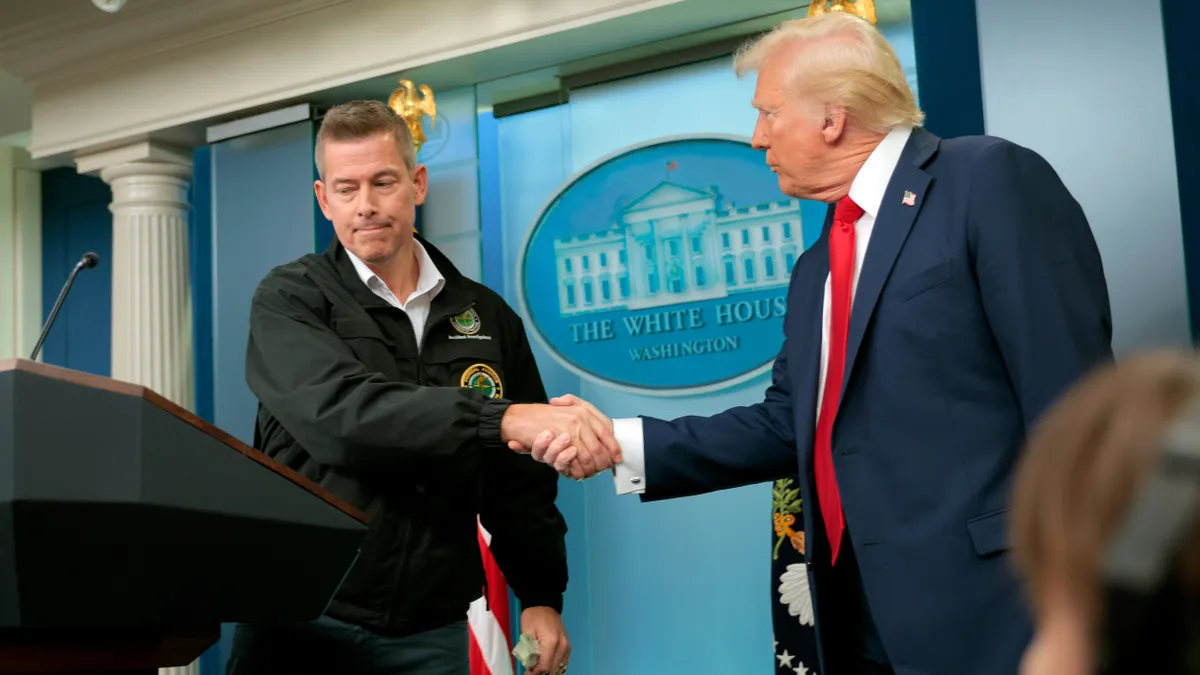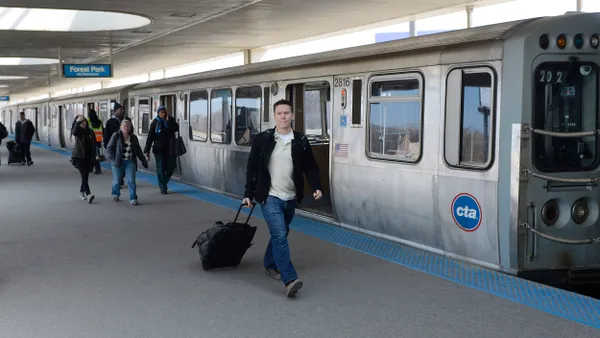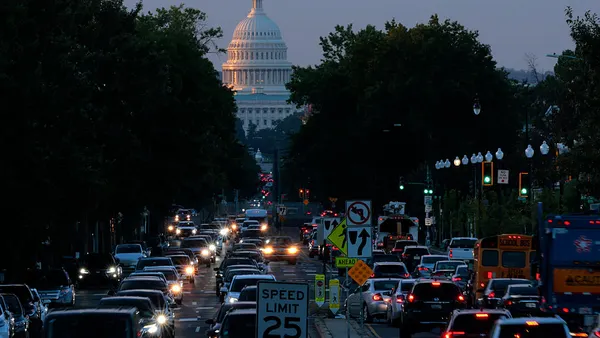Dive Brief:
- Tesla launched its robotaxi service Sunday in Austin, Texas. Rides are limited to an invited group of what appear mainly to be social media influencers and Tesla supporters.
- The robotaxi service will operate from 6 a.m. to 12 a.m. Central Time in limited areas of Austin, according to Tesla. A Tesla safety monitor accompanies each ride, sitting in the front passenger seat. Riders are not allowed to sit in the driver’s seat.
- Before Tesla can operate robotaxis without a human driver, it will have to comply with new Texas regulations signed into law June 20 that go into effect Sept. 1. Some state lawmakers asked Tesla to delay autonomous robotaxi operations until the new law takes effect, saying, “We believe this is in the best interest of public safety and building public trust in Tesla's operations.”
Dive Insight:
Tesla CEO Elon Musk announced plans to operate robotaxi service in California and Texas during an event in October featuring a two-seat driverless vehicle it called a Cybercab. Tesla Model Y SUVs are providing the robotaxi service in Austin instead.
“Probably for the first few months, they're going to have a lot of supervision,” Andrew Rocco, stock strategist at Zacks Investment Research, said in an interview. Rocco believes Musk wants to make sure that Tesla’s Full Self Driving software “is absolutely safe” before a full launch.
Rocco is also optimistic about Tesla’s success against competitors like Waymo and Zoox in the robotaxi industry. “None of these [competitors], at the moment or anywhere in the near future, are going to be able to simply produce enough cars that are needed,” he said. Rocco sees Tesla ultimately commanding 60% to 70% of the robotaxi market, with Waymo at 20% and others divvying up the remainder.
Musk said during the company’s April 22 earnings call “that there will be millions of Teslas operating autonomously, fully autonomously, in the second half of next year.”
Waymo has “more vehicles, more visibility” than other robotaxi companies, said Craig Melrose, global managing partner, advanced technologies at HTEC, a product development and digital engineering company. Melrose acknowledged, however, that Tesla has more autonomous driving data collected from its many vehicles on the road, and “they may know something that none of us know.”
Transportation Secretary Sean Duffy said April 24 that the National Highway Traffic Safety Administration would develop a new framework more favorable to autonomous vehicles. That could help ramp up robotaxi deployment among U.S. cities, according to industry observers.
Waymo said last week it wants to begin service in New York City with human drivers. The company is asking the state to change a state law prohibiting driverless vehicles.
Melrose sees a potential future where robotaxis replace personal vehicle ownership. He points out that cars are “extremely expensive” yet get little use on a daily basis.
Tesla did not respond to a request for clarification on the safety monitor’s role and ability to intervene to prevent an accident, or to a question on whether Tesla will comply with the new Texas AV regulations.












